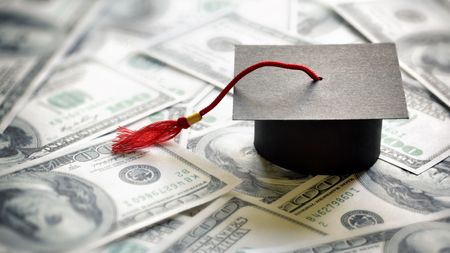Slow Start for Back-to-School Sales
Consumers are still saying 'show me the discount' but in the end, they'll stock up.
After two years of declining back-to-school sales for retailers, a 3% increase is likely this year. That’s hardly top marks, but after the failing grades of 2008 and 2009, it can be considered at least a C. Persistent high unemployment is likely to keep consumers from splurging, and bargain hunting will continue during retailers’ second-busiest selling season of the year.
Though there has been some letup in shoppers’ penny-pinching since the recession ended, it’s not clear how quickly consumers will revert to previous shopping habits -- if they ever do. For now, penny-wise shoppers will seek out the deepest discounts and best values on everything from pens and pencils to notebook computers and dorm furnishings. Retailers will ante up with eye-popping discounts “just to drive traffic to the stores” in the hope that customers will buy more when they get inside, says Michael Souers, an equity analyst for Standard & Poor’s. Office Depot and Staples, for example, both have plans to sell basic school supplies for loose change.
Shoppers are likely to delay some purchases well past the start of the school year as well. Clothing buys, especially, are likely to come later than usual, as kids wait to see what’s hot. Says Frank Badillo, vice president and senior economist at Kantar Retail, a retail consultancy: “If the deal-seeking behavior holds strong, then people will do their shopping when they get the best deals.”

Sign up for Kiplinger’s Free E-Newsletters
Profit and prosper with the best of expert advice on investing, taxes, retirement, personal finance and more - straight to your e-mail.
Profit and prosper with the best of expert advice - straight to your e-mail.
Certainly retailers will have to lure consumers with a combination of distinctive products and prices that make them worth it -- a combination of “high fashion quotient and value,” says Marie Driscoll, director, consumer discretionary retail, U.S. Equity Research at Standard & Poor’s. Teen clothing seller American Eagle Outfitters, for example, is offering customers who try on a pair of jeans a free smart phone, though the phone comes with a two-year service plan that recipients have to pay for.
In fact, electronics -- especially e-readers and smart phones -- and other hard goods such as room furnishings will be at the top of shoppers’ lists. Another priority: New shoes, according to Driscoll. Not only do kids regularly outgrow them, but fashionable new styles are enticing shoppers of all ages to spend more apparel dollars on footwear. From April-February 2010, shoe sales were up more than 16% over the same period in 2009, according to The NPD Group, a market research company.
Otherwise, shoppers will restock the items they need, especially if they cut back last year. “You can’t skip two years,” says Marshal Cohen, chief industry analyst at NPD. “Kids outgrow and outwear clothes and accessories too fast to be able to go that long without updating wardrobes.” Online sales across various categories should get a boost, since more Internet oriented younger shoppers are involved in back-to-school choices.
Although the 3% pace of growth for the back-to-school selling season will be a bit slower than it was earlier in the year, retail sales will actually perform better. Sales in early 2009 were so sluggish that even a small increase in dollar value meant a larger percentage gain. Overall, we expect retail sales to grow about 4% in 2010.
Get Kiplinger Today newsletter — free
Profit and prosper with the best of Kiplinger's advice on investing, taxes, retirement, personal finance and much more. Delivered daily. Enter your email in the box and click Sign Me Up.
-
 ‘Are You Better Off Than You Were 71 Days Ago?’ Cory Booker Marathon Senate Speech Highlights Tax Debate
‘Are You Better Off Than You Were 71 Days Ago?’ Cory Booker Marathon Senate Speech Highlights Tax DebateTax Policy A speech protesting Trump’s policies, including tax plans, breaks U.S. Senate records.
By Kelley R. Taylor Published
-
 Stock Market Today: Stocks Are Mixed Before Liberation Day
Stock Market Today: Stocks Are Mixed Before Liberation DayMarkets are getting into the freewheeling rhythm of a second Trump administration.
By David Dittman Published
-
 What To Know if You’re in the Market for a New Car This Year
What To Know if You’re in the Market for a New Car This YearThe Kiplinger Letter Buying a new car will get a little easier, but don’t expect many deals.
By David Payne Published
-
 Will Lower Mortgage Rates Bring Relief to the Housing Market?
Will Lower Mortgage Rates Bring Relief to the Housing Market?The Kiplinger Letter As mortgage rates slowly come down here's what to expect in the housing market over the next year or so.
By Rodrigo Sermeño Published
-
 Car Prices Are Finally Coming Down
Car Prices Are Finally Coming DownThe Kiplinger Letter For the first time in years, it may be possible to snag a good deal on a new car.
By David Payne Published
-
 New Graduates Navigate a Challenging Labor Market
New Graduates Navigate a Challenging Labor MarketThe Kiplinger Letter Things are getting tough for new graduates. Job offers are drying up and the jobless rate is increasing. Are internships the answer?
By David Payne Last updated
-
 When's the Best Time to Buy a Domestic Flight? The Kiplinger Letter
When's the Best Time to Buy a Domestic Flight? The Kiplinger LetterThe Kiplinger Letter A new study by CheapAir.com has crunched the numbers.
By Sean Lengell Published
-
 Woes Continue for Banking Sector: The Kiplinger Letter
Woes Continue for Banking Sector: The Kiplinger LetterThe Kiplinger Letter Regional bank stocks were hammered recently after news of New York Community Bank’s big fourth-quarter loss.
By Rodrigo Sermeño Published
-
 Anxious Flyers Take Note: The Kiplinger Letter
Anxious Flyers Take Note: The Kiplinger LetterThe Kiplinger Letter Whether it's the routes to avoid that have the most turbulence or the safest airline, we've got you covered.
By Sean Lengell Published
-
 The Auto Industry Outlook for 2024
The Auto Industry Outlook for 2024The Kiplinger Letter Here's what to expect in the auto industry this year. If you’re in the market for a car it won’t be quite as daunting as it was during the pandemic and after.
By David Payne Published